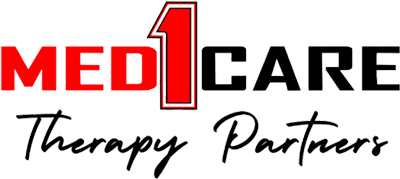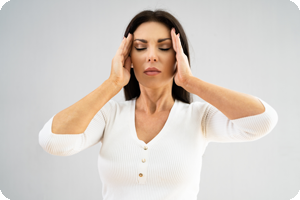 Med1Care Therapy Partner’s physical therapists specialize in the treatment of balance and gait. Balance and gait issues may be indicated by difficulty walking, trouble getting up from a seated position or challenges leaning down to tie shoelaces.
Med1Care Therapy Partner’s physical therapists specialize in the treatment of balance and gait. Balance and gait issues may be indicated by difficulty walking, trouble getting up from a seated position or challenges leaning down to tie shoelaces.
Walking is a complex activity that requires several systems to operate together: brain, bones, musculature and the cardiovascular system. Challenges in any of these systems can impact the ability to walk and maintain balance.
Treatment is important because gait conditions put you at higher risk for sustaining injuries in a fall. Gait disorders can also be indicators of an underlying medical condition, such as a neurological disorder, dementia or musculoskeletal disorders.
Reasons for Balance & Gait Conditions
Many issues can contribute to balance and gait conditions, including weakening of leg and core muscles.
Although every gait is unique and symptoms vary widely, the way your body moves provides clues to the underlying reasons for the gait problem.
Gait disorders may arise from arthritis, injury and pain, weakness in the lower limbs and feet, heart conditions, respiratory problems and obesity.
There are six common gait conditions, including:
- Hemiplegic gait is usually caused by a stroke and impacts one side of the body. One side of the body stops functioning normally, the arm stops swinging during walking and the leg will be dragged in a semi-circle to come forward.
- Diplegic gait is usually caused by stroke, head trauma or cerebral palsy. It impacts both sides of the body. Ankles will be turned in as the hips and knees bend. Steps have a swinging effect.
- Neuropathic gait (foot drop) is usually caused by multiple sclerosis (MS), amyotrophic lateral sclerosis (ALS) or peripheral neuropathy. When stepping forward, the foot drops, so the knees must be lifted higher to prevent the toes from dragging on the ground.
- Myopathic gait (waddling gait) is usually caused by muscular dystrophy, muscle disease or weakness in the pelvic area or spinal muscle weakness. When walking this gait looks like a side-to-side movement.
- Ataxic gait is usually caused by alcohol intoxication, medication or brain injury. When walking this gait produces a staggering and weaving movement. Balance may also be impacted and swaying present while standing.
- Parkinsonian gait is often a symptom of Parkinson’s disease. It is characterized by small steps and forward stooping, with a bent neck and back.
How We Can Help
Med1Care Therapy Partner’s experienced therapists are trained in treating balance and gait, including providing physical therapy for gait and balance. Your treatment plan may include assistance with exercises that strengthen the muscles that help you stand, so you can improve stability and lower the risk of falls. You may also receive support choosing and using an assistive device that will help you maintain your mobility and quality of life. Supplements and medications may also be recommended to improve bone health and reduce the risk of breakage during a fall. We will partner with your physician to help you build a road to recovery.
Call us at 419.866.0555 to schedule a consultation. Our specialists will help you chart a course forward.
Return to the home page here
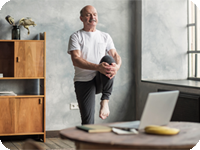 Balance exercises strengthen the muscles in your core and legs to improve your stability and prevent falls.
Balance exercises strengthen the muscles in your core and legs to improve your stability and prevent falls.
Here are six balance exercises to add to your fitness routine:
- Stand on one leg and raise the other to the front, side and back
- Walk an imaginary tightrope, heal to toe
- Sit in a chair and stand without using your hands for assistance
- Alternate knee lifts while walking
- Practice yoga or tai chi
- Stand on a Bosu half-circle stability ball or balance board
When these no longer present a challenge, hold the position for longer, add movement to a pose or close your eyes.
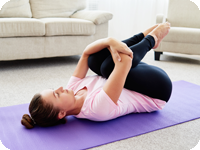 Progressive no-impact strength-building exercise is important to include in your regime two days a week.
Progressive no-impact strength-building exercise is important to include in your regime two days a week.
Areas to focus on:
- Core, including abs
- Legs, including squats
- Glutes
- Back muscles
Read more about balance training here.
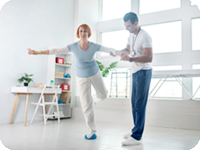 Balance training is one of the best ways to strengthen your core and reduce the pain of health conditions like back pain, arthritis and diabetes.
Balance training is one of the best ways to strengthen your core and reduce the pain of health conditions like back pain, arthritis and diabetes.
